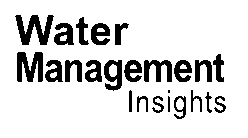In an era where water scarcity and pollution are pressing global challenges, a groundbreaking study has emerged from Peru that could reshape the future of wastewater treatment. Researchers led by Luigi Bravo-Toledo from the Faculty of Environmental Engineering and Natural Resources at the Universidad Nacional del Callao have developed a co-treatment system that combines municipal wastewater with acidic mine drainage, utilizing intermittent electrocoagulation to enhance contaminant removal and optimize energy efficiency.
The study, published in the journal ‘Water’, explores four distinct treatment scenarios, each designed to tackle the complex issues posed by both types of wastewater. The researchers found that while advanced technologies like electrocoagulation can significantly improve contaminant removal, they also increase reliance on non-renewable resources. “The challenge lies in balancing efficiency with sustainability,” Bravo-Toledo stated. “Our findings suggest that integrating natural resources, such as eutrophic water, can enhance the overall sustainability of the treatment process.”
In particular, the research highlights Treatment IIIb, which combines electrocoagulation with eutrophic water at a 1/15 ratio of acidic water to eutrophic water. This approach not only achieved a Sustainability Index (SI) of 2.31 but also demonstrated a reduction in environmental loading despite the intensive use of external resources. The study indicated that, while Treatment IIIa showed effective contaminant removal, it resulted in a higher Environmental Loading Ratio (ELR) and Emergy Inversion Ratio (EIR), signaling greater environmental pressure and reliance on non-renewable inputs.
The implications of this research are significant for the water, sanitation, and drainage sector. As municipalities and industries grapple with the dual challenges of wastewater management and environmental sustainability, the adoption of such integrated treatment systems could lead to more efficient operations and reduced ecological footprints. The findings advocate for a shift towards technologies that not only meet regulatory standards but also promote the use of renewable resources, thereby fostering a more sustainable approach to water management.
Bravo-Toledo’s work underscores the importance of innovative solutions in addressing the urgent need for effective wastewater treatment in regions affected by mining activities, such as Cerro de Pasco. “Our goal is to provide a framework that supports decision-making in water management practices, especially in areas where traditional methods have fallen short,” he emphasized.
As the global community continues to seek sustainable solutions for water quality challenges, this research offers a promising avenue for enhancing treatment processes while minimizing environmental impacts. The integration of advanced technologies with natural resources could pave the way for more resilient water systems, ultimately benefiting ecosystems and human health alike.
For more insights into this research, you can visit the Faculty of Environmental Engineering and Natural Resources at the Universidad Nacional del Callao. The study serves as a crucial reminder of the potential for innovation in the water sector, providing a roadmap for future developments that prioritize sustainability and efficiency.
